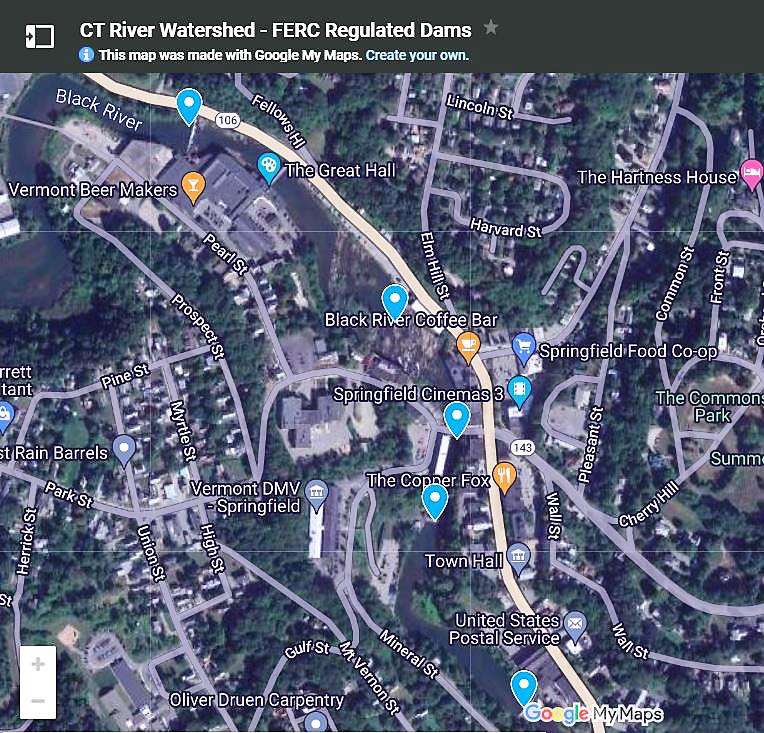
Springfield’s Black River has more than just scenic significance! Its drop of 110 feet in one-eighth of a mile in the downtown area translates to abundant water power that spurred the growth of Springfield’s machine tool industry. Water power is still available today at five licensed sites:
Historically, the Fellows Dam powered Fellows Gear Shaper (1896), while the Gilman Dam powered a machine shop and woodworking operations dating back to the late 18th century. A grist mill and sawmill formerly occupied the site of Comtu Cascade Park where artist Jamie Townsend’s rendition of a giant clothespin celebrates Springfield’s many innovations. Opposite Comtu Park is the 1829 Parks & Woolson textile machinery factory that’s in the process of historic conservation and redevelopment. When it closed in 2003 it was the oldest manufacturing facility in continuous operation in the State of Vermont.
Just below Parks & Woolson, Gravity Renewables operates a hydroelectric station at Comtu Falls. Nearby, the Slack Dam once powered a textile mill and Springfield’s electric railway. The railway roadbed has been reclaimed as the Toonerville Trail, a popular recreation venue leading to the Connecticut River. Lastly, the turbine at Lovejoy Dam currently provides power to Lovejoy Tool, a company that has carried Springfield’s machine tool manufacturing legacy down to the present day.
Not least in Springfield’s notable sites on the Black River is the U.S. Army Corps of Engineers’ North Springfield flood control dam that impounds water from an area of over 200 square miles. That facility, one of eight USACE dams in Vermont, conserves 1700 acres of land and can retain over 16 billion gallons of water. Construction began in 1958 in response to significant floods, notably the Great Vermont Flood of 1927 that inundated downtown Springfield and many other places in the state. The North Springfield dam has proven its value during Tropical Storm Irene in 2011 and most recently in July 2023. Springfield is very fortunate to host this facility that offers so many benefits to the town and the surrounding area.
56 Main Street, Springfield, VT 05156 (802) 952 0428
@Copyright 2025 Springfield802.com. All Rights Reserved.